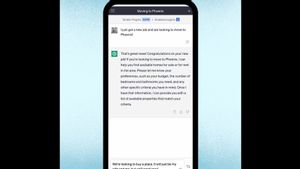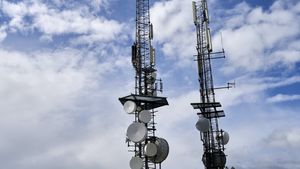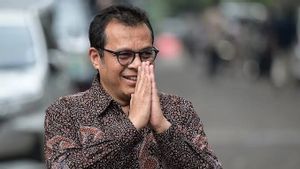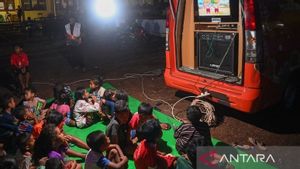JAKARTA - NASA released an animation comparing the size of ten black holes and visible on the scale of the Solar System. These Monsters lurk in the centers of most major galaxies, including the Milky Way and have masses between 100,000 and tens of billions more than the Sun.
"Indirect measurements, mostly carried out with the help of the Hubble Space Telescope, confirm the presence of more than 100 supermassive black holes," said NASA's Goddard Space Flight Center analyst at Greenbelt, Maryland, Jeremy Schnittman, quoted Thursday, May 4.
How did they get so big? When galaxies collide, their central black hole can finally join too," he added.
In 2019 and 2022, a network of radio observatories that reaches the planet called the Event Horizon Telescope each produces the first images of a giant black hole in the centers of M87 and the Milky Way.
They reveal a bright ring of hot gas orbiting around the dark circle zone. Any light that crosses the event horizon, the point of not being able to return to the black hole is trapped forever, and any passing light nearby is deflected by the strong gravity of the black hole.
Together, the effect produces a shadow about twice the size of the actual black hole event horizon.
NASA's new animation shows 10 super large black holes occupying the main stage of its host galaxies, including the Milky Way and M87, scaled by their shadow size. Watch here.
Starting from near the Sun, the camera slowly withdrew to compare a larger black hole with a different structure in the Solar System.
The first is the dwarf galaxy 1601+3113, which houses a black hole packaged with a mass of 100,000 suns. The material is so dense that the black hole's shadow is smaller than our Sun.
A black hole in the heart of our own galaxy, called Sagittarius A* (said ay-star), weighs 4.3 million suns based on long-term tracking of stars in the surrounding orbit.
Its shadow diameter covers about half of Mercury's orbit in the Solar System. Animations show two monster black holes in the galaxy known as NGC 7727.
Located about 1,600 light-years, one weighing 6 million solar masses and the other more than 150 million suns. Astronomers say the couple will join in the next 250 million years.
"Since 2015, the gravitational wave observatory on Earth has detected a merger of black holes with several dozen solar masses thanks to the tiny ripples in the spacetime this event produces," said Goddard astrophysicist Ira Thorpe.
The incorporation of supermassive black holes will result in much lower frequency waves that can be detected using space-based observatories millions of times larger than their Earth-based counterparts, he added.
That's why NASA is working with the European Space Agency (ESA) to develop their LISA mission, a Laser Interferometer Space Antenna, which is expected to launch in the coming decade.
另请阅读:
LISA will consist of constellations of three spacecraft in a triangle that fires laser beams back and forth millions of miles to measure their precise separation.
This will allow detection of gravitational waves that pass from merging black holes with masses up to several hundred million suns. Astronomers are exploring other detection techniques to tackle larger mergers.
On a larger animated scale there is an M87 black hole, now with an updated mass of 5.4 billion suns.
The image is so big that even a light file, which is traveling at a speed of 670 million mph (1 billion kph) takes about two and a half days to pass.
The animation ended with TON 618, one of a handful of very distant and massive black holes measured directly by astronomers. The giant contains more than 60 billion solar masses, and has a very large shadow that takes weeks to cross it.
The English, Chinese, Japanese, Arabic, and French versions are automatically generated by the AI. So there may still be inaccuracies in translating, please always see Indonesian as our main language. (system supported by DigitalSiber.id)












